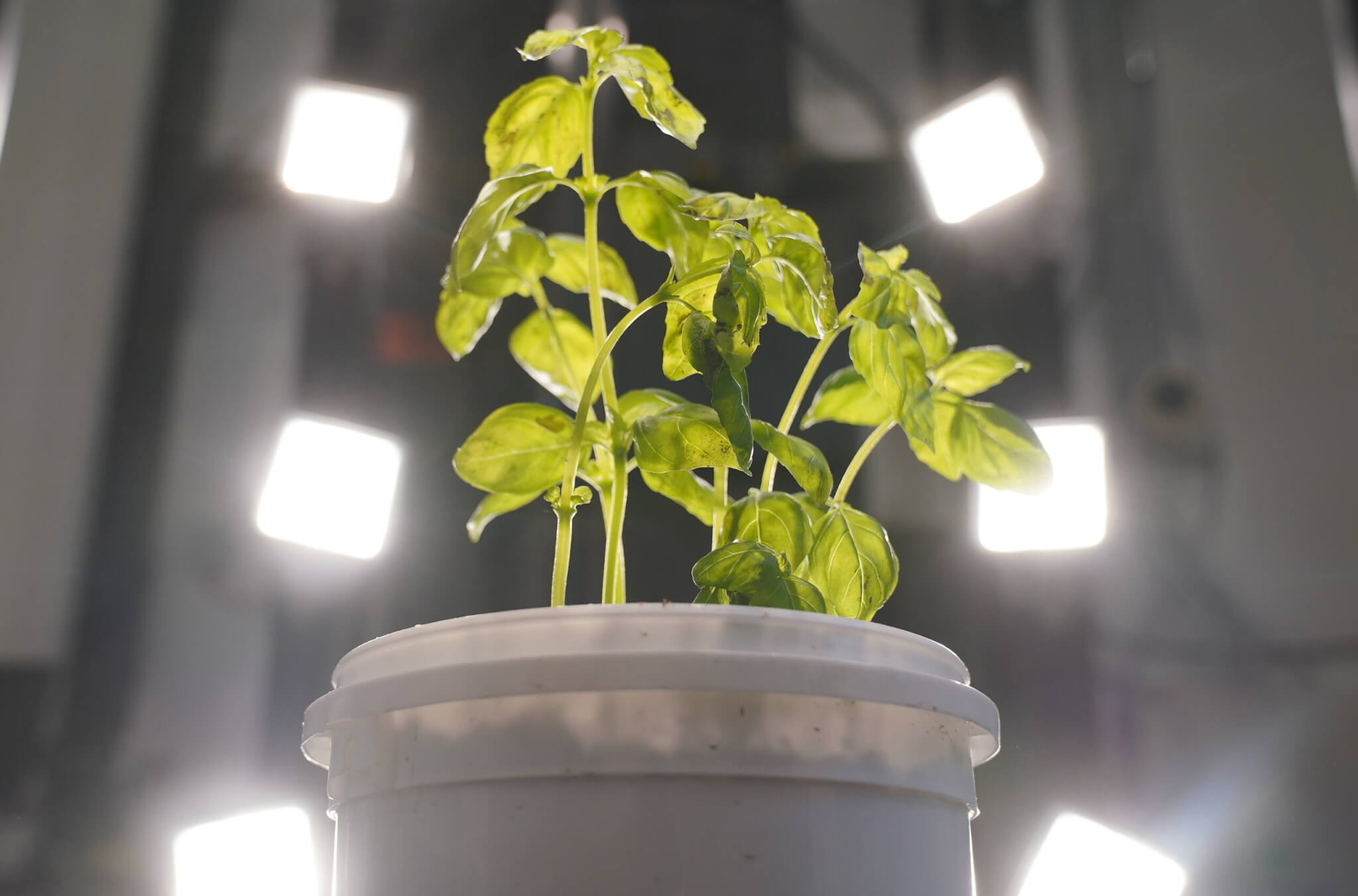
The team implemented a machine-learning algorithm to sort and classify the data.
“Through our dual pair of hyperspectral cameras, we can achieve full spectrum optical sensing from both the top and sides of a plant,” Yang said. “Purdue’s hyperspectral system can be used to scan plants from seedlings to a 15-foot corn stalk. This was the first time we used it to look for stress from heavy metals. It is an exciting application and was a new interdisciplinary challenge.”
The team first thought the effect of cadmium toxicity stress on levels of chlorophyll production would be a likely indicator, and they examined the green light spectrum. The resulting color change was very subtle. The team progressed through other stress-related changes in the plant and other parts in the plant’s reflectance spectra, Hoagland said. They found changes in metabolites due to the stress response offered a much clearer hyperspectral signal of stress.
“Looking at these secondary metabolites gave a much stronger signal, and there was a clear ‘purpling’ of the plant when viewed with the corresponding anthocyanin wavelengths,” she said. “So, if green decreases and purple increases, we know the plant is stressed.”
Hoagland and her team evaluated “vegetation indices,” which are combinations of reflectance from different wavelengths that have been identified as best for hyperspectral analysis of different plant properties. The team found the Anthocyanin Reflective Index, or ARI, is the best for detecting cadmium stress, and they developed a specific vegetation index ratio equation for it. They also developed a soil amendment to reduce the level of cadmium taken up by the plant. The work is detailed in a paper published in the journal Environmental Pollution.